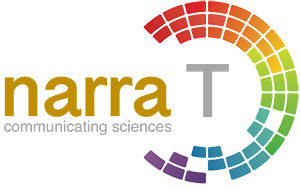Dual anti-inflammatory and antimicrobial effects of stingless bee propolis on second-degree burns
DOI:
https://doi.org/10.52225/narra.v5i1.2359Keywords:
Wound healing, propolis, TNF-α modulation, VEGF-mediated angiogenesis, network pharmacologyAbstract
Propolis, a natural resinous product from stingless bees, is widely recognized for its anti-inflammatory and antimicrobial properties. However, its combined effects in addressing both inflammation and infection in second-degree burns have remained insufficiently explored. The study aimed to investigate the dual role of propolis in modulating inflammation and preventing bacterial infections caused by methicillin-resistant Staphylococcus aureus (MRSA) and Pseudomonas aeruginosa in a second-degree burn model. Propolis was collected from stingless bees in Gowa, South Sulawesi, Indonesia, and extracted using methanol. Second-degree burns were induced in male Rattus norvegicus, which were then divided into three groups: one treated with propolis, another silver sulfadiazine (positive control), and third with NaCl (negative control). After seven days of treatment, the expression of tumor necrosis factor-alpha (TNF-α) and vascular endothelial growth factor (VEGF) proteins in wound samples was analyzed using immunohistochemistry. The antimicrobial activity of the propolis extract was assessed using the disc diffusion assay, followed by minimum inhibitory concentration (MIC) testing. Network pharmacology analysis was also conducted to assess the anti-inflammatory activity of propolis. Results showed that propolis significantly reduced TNF-α expression and increased VEGF expression, which might enhance VEGF-mediated angiogenesis, leading to improved wound healing compared to controls. The antimicrobial tests demonstrated strong activity against MRSA and P. aeruginosa, with inhibition zones correlating with higher extract concentrations. The MIC value of the propolis extract was 198.66 µg/µL against MRSA and 212.06 µg/µL against P. aeruginosa. Network pharmacology analysis revealed key proteins, including Jun proto-oncogene (JUN), estrogen receptor 1 (ESR1), signal transducer and activator of transcription 3 (STAT3), and proto-oncogene tyrosine-protein kinase Src (SRC), involved in the regulation of TNF-α and VEGF, further supporting the synergistic effects of propolis. This study demonstrates that stingless bee propolis effectively promotes tissue regeneration and prevents infection in second-degree burns, highlighting its potential as an alternative to conventional treatments for wound care.
Downloads
Downloads
How to Cite
Issue
Section
Citations
License
Copyright (c) 2025 Christian O. Manginstar, Trina E. Tallei, Christina L. Salaki, Nurdjannah J. Niode, Hendra K. Jaya

This work is licensed under a Creative Commons Attribution-NonCommercial 4.0 International License.



